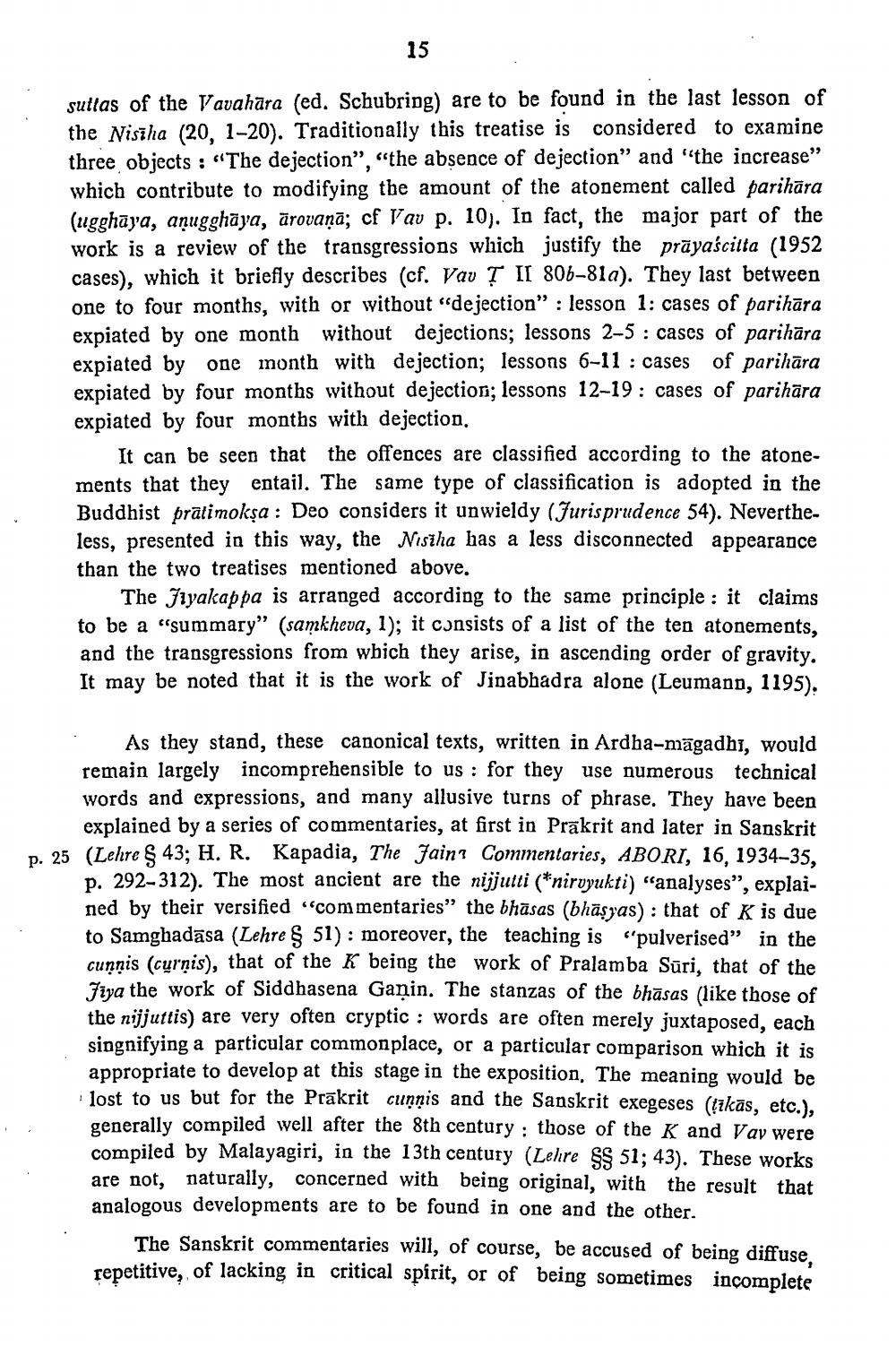________________
15
sutlas of the Vavahāra (ed. Schubring) are to be found in the last lesson of the Nisīha (20, 1-20). Traditionally this treatise is considered to examine three objects : "The dejection”, “the absence of dejection" and "the increase” which contribute to modifying the amount of the atonement called parihāra (ugghāya, aṇugghāya, ārovaņā; cf Vav p. 10). In fact, the major part of the work is a review of the transgressions which justify the prāyaścitta (1952 cases), which it briefly describes (cf. Vav T II 806-81a). They last between one to four months, with or without "dejection” : lesson 1: cases of parihāra expiated by one month without dejections; lessons 2-5: cases of parihāra expiated by one month with dejection; lessons 6-11 : cases of parihāra expiated by four months without dejection; lessons 12-19 : cases of parihāra expiated by four months with dejection,
It can be seen that the offences are classified according to the atonements that they entail. The same type of classification is adopted in the Buddhist prātimokşa: Deo considers it unwieldy (Jurisprudence 54). Nevertheless, presented in this way, the Nisiha has a less disconnected appearance than the two treatises mentioned above.
The Jiyakappa is arranged according to the same principle : it claims to be a “summary” (samkheva, 1); it consists of a list of the ten atonements, and the transgressions from which they arise, in ascending order of gravity. It may be noted that it is the work of Jinabhadra alone (Leumann, 1195).
. As they stand, these canonical texts, written in Ardha-māgadhi, would remain largely incomprehensible to us : for they use numerous technical words and expressions, and many allusive turns of phrase. They have been
explained by a series of commentaries, at first in Prakrit and later in Sanskrit p. 25 (Lehre $ 43; H. R. Kapadia, The Jain? Commentaries, ABORI, 16, 1934-35,
p. 292-312). The most ancient are the nijjutti (*nirvvukti) “analyses” explained by their versified "commentaries" the bhāsas (bhäsyas): that of K is due to Samghadasa (Lehre S 51): moreover, the teaching is pulverised" in the cunnis (curnis), that of the K being the work of Pralamba Sūri, that of the Fova the work of Siddhasena Ganin. The stanzas of the bhāsas (like those of the nijjuttis) are very often cryptic : words are often merely juxtaposed, each singnifying a particular commonplace, or a particular comparison which it is appropriate to develop at this stage in the exposition. The meaning would be lost to us but for the Prākrit cunnis and the Sanskrit exegeses (tīkās, etc.), generally compiled well after the 8th century : those of the K and Vay were compiled by Malayagiri, in the 13th century (Lehre SS 51; 43). These works are not, naturally, concerned with being original, with the result that analogous developments are to be found in one and the other.
The Sanskrit commentaries will, of course, be accused of being diffuse. repetitive, of lacking in critical spirit, or of being sometimes incomplete




